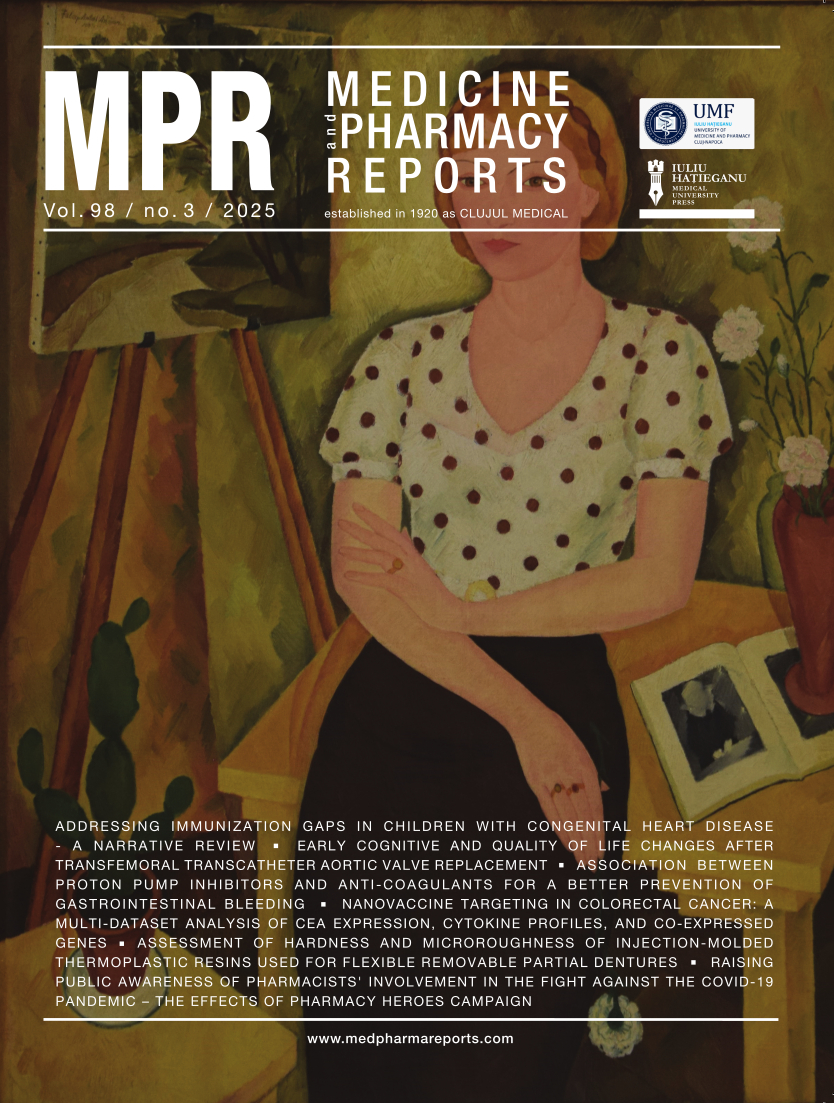Pancreatic cancer: a persistently challenging prognosis - a single center three-year retrospective study
DOI:
https://doi.org/10.15386/mpr-2848Keywords:
pancreatic adenocarcinoma, echo-endoscopy, oncological treatment.Abstract
Background: Pancreatic adenocarcinoma (PDAC) is a leading cause of cancer-related mortality due to its aggressive progression and late diagnosis. Despite advances in diagnosis and treatment, survival outcomes remain poor, with a median survival of 5.8 months.
Objective: The aim of the study is to evaluate the impact of diagnostic and therapeutic approaches on survival outcomes in patients with pancreatic adenocarcinoma, while also assessing the risk factors for PDAC.
Methods: This study is a retrospective analysis of 68 patients with suspected pancreatic tumors who underwent endoscopic ultrasound-guided fine needle aspiration biopsy (EUS-FNAB) between 2019 and 2022 at the Cluj-Napoca County Emergency Clinical Hospital. Patient demographics, risk factors, histopathological results and treatment outcomes were analyzed using statistical methods.
Results: Of 68 patients, 35 were diagnosed with PDAC. Modifiable risk factors, such as alcohol and smoking, alongside non-modifiable factors like age and hereditary predisposition, were prominent. Among PDAC patients, 42.8% received palliative chemotherapy, while only 8.6% underwent curative surgical intervention due to advanced disease stages. Median survival varied significantly based on treatment: 2.4 months for untreated patients versus 8.1 months for those receiving oncological or surgical management (p=0.0082).
Conclusion: Modifiable and non-modifiable risk factors significantly raise the incidence of pancreatic cancer. Therefore, employing a multidisciplinary approach to detect the disease in its early stages and optimize personalized treatment plans can enhance patient outcomes. At the same time, traditional oncological treatments improve survival and quality of life, but newer approaches, such as immunotherapy combined with conventional radiotherapy, chemotherapy, molecular targeted therapy, and other diverse treatment modalities, have the potential to further extend survival.
Downloads
Published
How to Cite
Issue
Section
License
Copyright (c) 2025 Medicine and Pharmacy Reports
The authors are required to transfer the copyright of the published paper to the journal. This is done by agreeing to sign the Copyright Assignment Form. Whenever the case, authors are also required to send permissions to reproduce material (such as illustrations) from the copyright holder.

The papers published in the journal are licensed under a Creative Commons Attribution-NonCommercial-NoDerivatives 4.0 International License.

